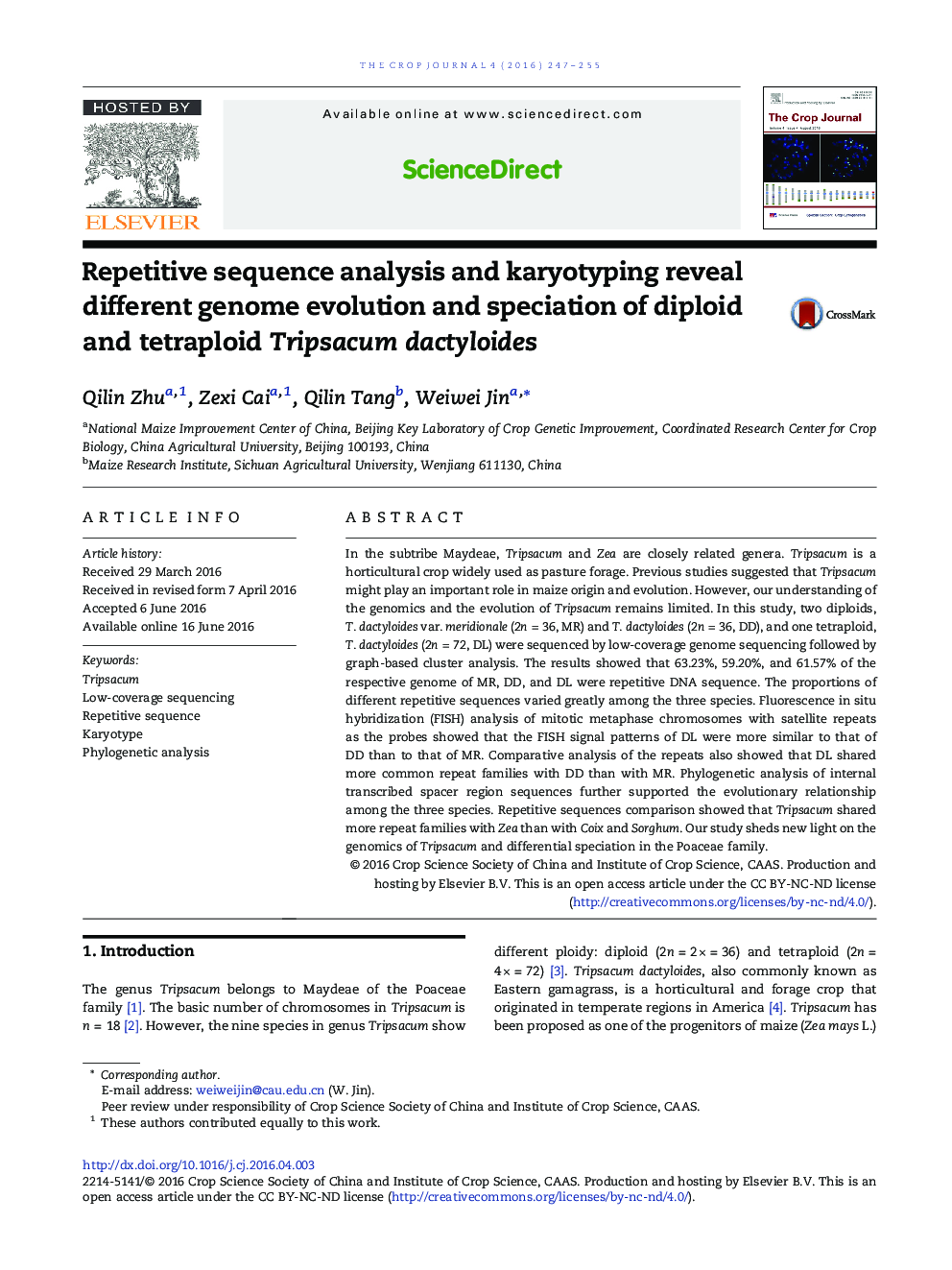| Article ID | Journal | Published Year | Pages | File Type |
|---|---|---|---|---|
| 2079399 | The Crop Journal | 2016 | 9 Pages |
In the subtribe Maydeae, Tripsacum and Zea are closely related genera. Tripsacum is a horticultural crop widely used as pasture forage. Previous studies suggested that Tripsacum might play an important role in maize origin and evolution. However, our understanding of the genomics and the evolution of Tripsacum remains limited. In this study, two diploids, T. dactyloides var. meridionale (2n = 36, MR) and T. dactyloides (2n = 36, DD), and one tetraploid, T. dactyloides (2n = 72, DL) were sequenced by low-coverage genome sequencing followed by graph-based cluster analysis. The results showed that 63.23%, 59.20%, and 61.57% of the respective genome of MR, DD, and DL were repetitive DNA sequence. The proportions of different repetitive sequences varied greatly among the three species. Fluorescence in situ hybridization (FISH) analysis of mitotic metaphase chromosomes with satellite repeats as the probes showed that the FISH signal patterns of DL were more similar to that of DD than to that of MR. Comparative analysis of the repeats also showed that DL shared more common repeat families with DD than with MR. Phylogenetic analysis of internal transcribed spacer region sequences further supported the evolutionary relationship among the three species. Repetitive sequences comparison showed that Tripsacum shared more repeat families with Zea than with Coix and Sorghum. Our study sheds new light on the genomics of Tripsacum and differential speciation in the Poaceae family.
